The Anton Paar Bioindenter is an excellent nanoindentation tester for determining the mechanical characteristics of human body tissue and soft materials. It is intended to study soft biological materials, such as soft tissue. The Bioindenter has an unrivaled force and displacement range and outstanding resolution, making it ideal for determining elastic modulus, creep, and other characteristics of cartilage, tissues, scaffolds, hydrogels, and eye tissues.
Mounted on a Step platform, the UNHT3 BIO head can be paired with another indentation or scratch testing head to cover the whole force range from nano to macro. Use the AFM to completely characterize mechanical surfaces.
- Measurement of soft and biological materials
- Most sensitive characterization of elastic modulus, creep, and other properties
- Wide range of indenters available (spherical, flat-punch, Berkovichs, Vickers, cube-corner, custom-made)
Key Features
Anton Paar Bioindenter: Dedicated to Research
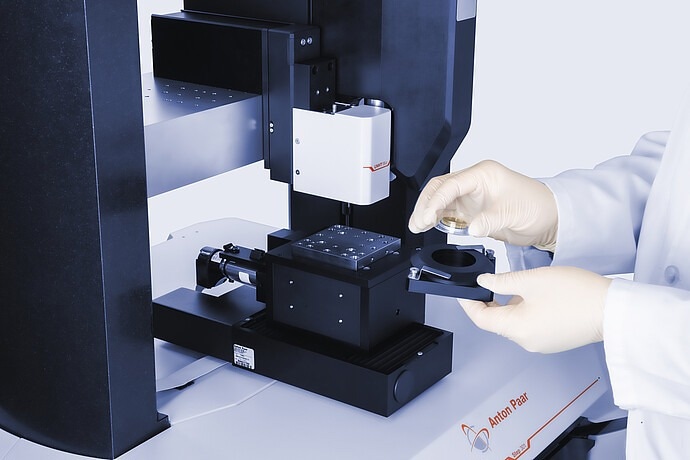
Image Credit: Anton Paar GmbH
Investigations using the Anton Paar Bioindenter yield useful insights into the mechanical behavior of very soft biological materials. This is especially useful when trying to better understand the human body, such as enhancing diagnostics, generating novel medications, designing tissues, and so on.
For these purposes, the Bioindenter has particular capabilities for biomaterial testing, such as the ability to do controlled force versus depth measurements. Furthermore, the Bioindenter detects surfaces through changes in contact stiffness and uses methods of measurement tailored specifically to biological materials.
The Indentation Procedure: Optimized Measurements
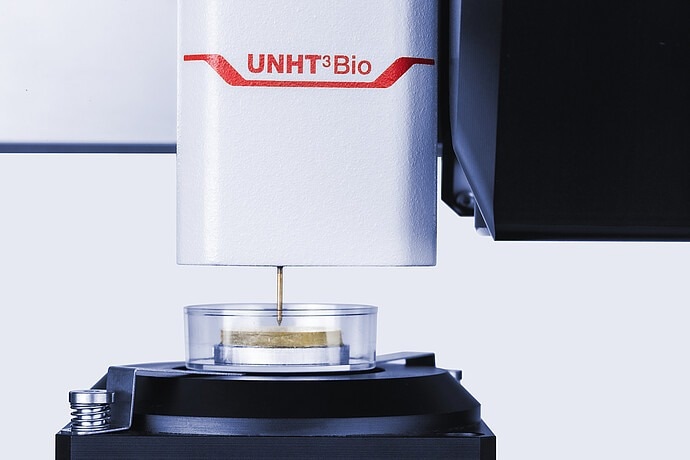
Image Credit: Anton Paar GmbH
The Anton Paar Bioindenter provides a variety of indentation processes, including quasi-static, dynamic, and user-defined indentation modes. In addition to conventional analytical models, it incorporates the Hertz model and automated pull-off adhesion analysis. The bioindenter allows users to determine contact points easily.
The Measurement System: A Class of Its Own
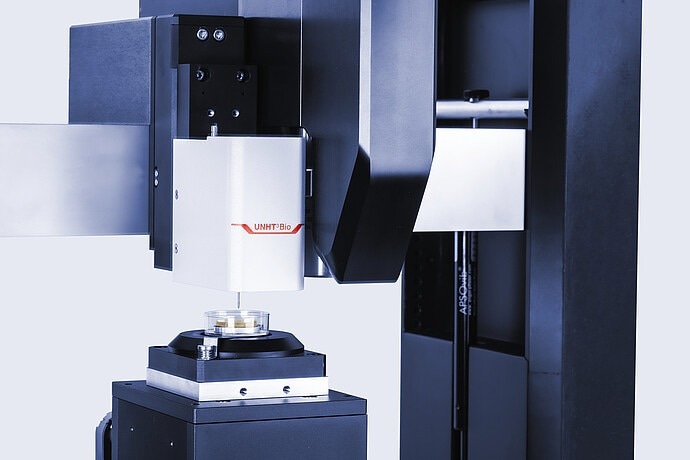
Image Credit: Anton Paar GmbH
The device's measurement unit is specifically built for high-precision nanoindentation in biology and medicine. The genuine force sensor can apply a maximum load of 20 mN, and the displacement sensor provides a broad travel range.
The Anton Paar Bioindenter offers excellent thermal stability for studying creep and flow parameters. The offered microscope has a long working distance objective. The motorized precision table allows for movements in the X, Y, and Z axes to properly position the sample.
Software: The Key to Results
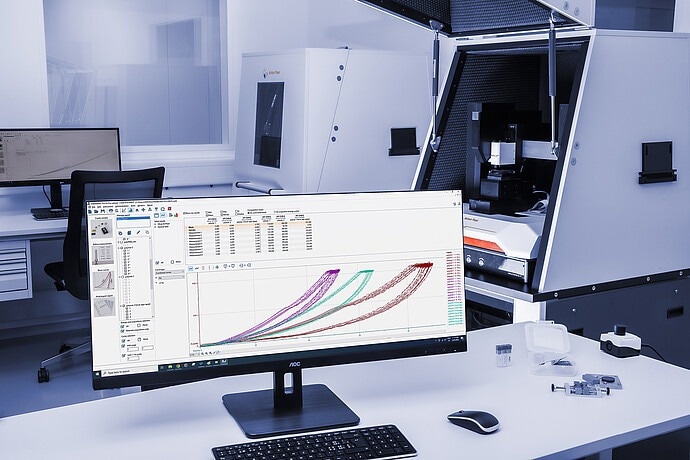
Image Credit: Anton Paar GmbH
The sophisticated yet simple software gives users complete control over the indentation methods. The findings are automatically examined, and a statistics module is available for a quick review of the data and outcomes. Multiple users with regulated access permissions can operate with the instruments and create user-defined ASCII outputs.
The elastic modulus can also be determined from the loading section of the indentation curve using Hertz’s model, which is more suited to biological materials than the frequently used Oliver & Pharr method.
Different Kinds of Indenters: The Choice is the Customer
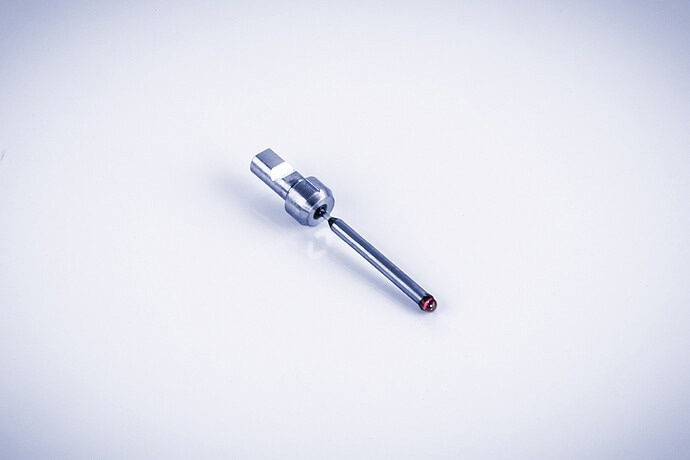
Image Credit: Anton Paar GmbH
Depending on the materials and requirements, the Anton Paar Bioindenter works with various indenters. Spherical indenters with radii ranging from 0.01 mm to 0.5 mm and larger are available, as well as flat-punch (flat-ended cylinder) indenters, Berkovich indenters, Vickers indenters, cube-corner indenters, and custom-made indenters for even the most demanding applications (large radii spheres, cylinders, etc.).
The Versatile Step Platform Concept
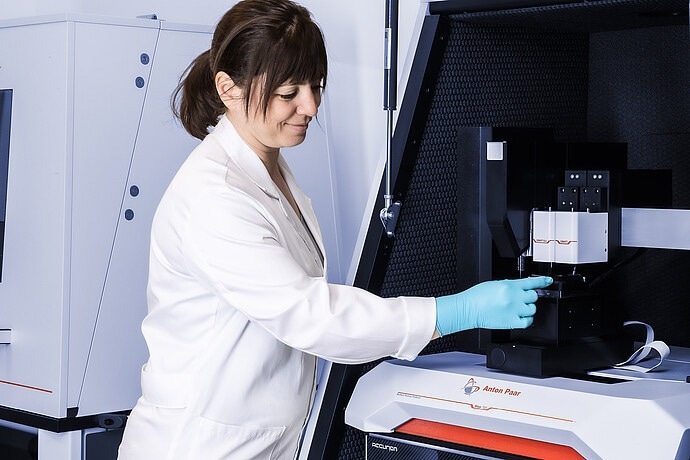
Image Credit: Anton Paar GmbH
Users can choose an appropriate solution from our platform portfolio depending on the test conditions and predicted sensitivity. Step platforms provide solutions for both single applications in specialized laboratories and shared equipment across departments. Their versatility allows them to perform high-sensitivity indentation testing on biomaterials, characterize hard polymer samples, and perform scratch testing, all on the same platform.
Technical Specifications
Source: Anton Paar GmbH
| Force |
| Max. force |
20 mN |
| Resolution |
down to 0.001 µN |
| Noise floor |
0.1 [rms] [μN]* |
| Depth |
| Max. depth |
100 μm |
| Resolution |
down to 0.006 nm |
| Noise floor |
0.25 [rms] [nm]* |
*Noise floor value specified under ideal laboratory conditions and using an anti-vibration table.